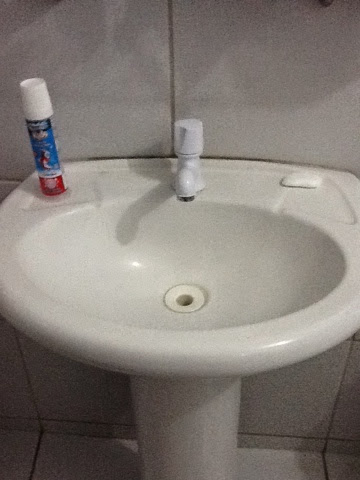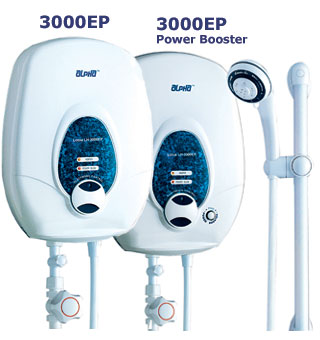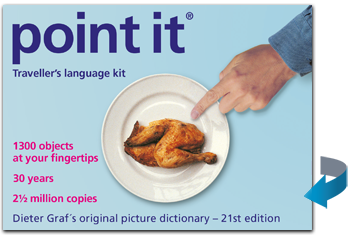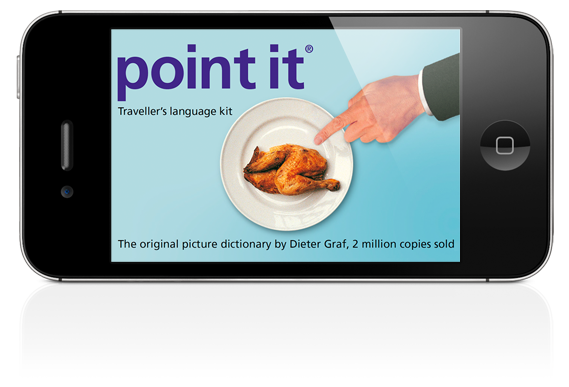Okay, I'm all about helping out people who are disabled. I don't begrudge the handicapped parking spots - even at Wal-Mart where you have to park a mile from that jug of milk you need - and I'm proud to have a friend who helps kids who need alternative methods of communication.
So when I saw that Brazil had installed nifty little bumpy tile things on sidewalks and on the floors of public places like airports to help the blind, I was impressed! Here was a country that was moving beyond the Americans with Disabilities Act to really help people gain independence!
Some bumps are round dots. These seem to indicate that the person should stop or at least prepare for some sort of change. They often appear at curbs, information counters, and at escalators. But some bumps are more like dashes or elongated ovals. These seem to indicate a walkway, path, or direction. What a great idea, right?
 |
| Bumpy lines leading up to the information desk at he Natal, Brazil airport |
But further investigation revealed that, while the idea is a good one, in most cases, the execution us just plain mean.
First, I noticed that on some sidewalks, the bumps just end abruptly and randomly. What happens to those poor vision-impaired citizens who were following these bumps? Do they stand frozen, wondering where the sidewalk has gone? Do they feel around tentatively with their feet, hoping the dots will reappear a few steps away?
 |
| Kinley, Lanita, and Josh walk between the bumps on the sidewalk. |
And sometimes, the bumps give conflicting messages.
Is the vision-impaired person supposed to walk or stop? Or maybe you walk on the left side but stop on the right side? Or maybe the sidewalk-installer-guys were trying to be cute? Who knows?
Then, in the airport in Rio, I noticed these color-coded bumpy indicators.
You may not be able to see this in the image above, but the red dots are in front of a fire extinguisher and the blue dots are in front of a bank of pay phones. I mean, seriously? The people using these bumps are blind! How are someone's feet going to feel the difference between the red FIRE EXTINGUISHER bumps and the blue PAY PHONE bumps??!!
I can just imagine the scene. A fire breaks out at gate 12. Someone yells, "Fire!" (Or the Portuguese equivalent, of course.). Then, do the airport planners really think that the BLIND guy is gonna be the one to say, "Don't worry! I'll get the fire extinguisher! I can follow the little dots!"? Do they really expect him to follow the little oval bumps to the RED round bumps indicating the fire extinguisher and not to the BLUE round bumps indicating the pay phones which are located right next to the red ones??!! What are the chances that they guy would pick up the fire extinguisher and not the phone?
Or perhaps that's the point. Maybe the airport planners decided that in either case, the blind guy could save the day. Either his little feet will guide him to the fire extinguisher (after which he'd follow the little bumps back to gate 12 and heroically aim said fire extinguisher in the exact location of the fire) or he'd accidentally pick up the phone, realize his mistake, and dial the appropriate authorities to report the incident. Either way, it's a win, I guess.
And then, at Iguazu Falls National Park in Argentina, I saw what was possibly the meanest blind accommodation ever. The park had helpfully mounted maps of the park onto tables at the visitors' center. They were 3D, and each one was quite large - perhaps 3 feet by 5 feet. Each map had a map key, explanations of points of interest, and labels written in English, Spanish, and Braille. There was only one problem. The maps were mounted - wait for it - under glass! Yes. That's what I said. The little Braille bumps were completely inaccessible to the fingers of the blind visitors because they were covered in protective glass.
 |
| Here you can see the Braille map key and part of the 3D map. You can also see the reflection of the protective glass that prevents the blind from actually using the map. Note the hand resting on the glass, a good 3 inches above the Braille. |
 |
| Detail of the Braille labels, still under glass |
Again, I can picture the scene. A blind visitor comes to the Argentinian side of Iguazu Falls. She heads over to the visitors' center (with much difficulty, since Argentina hasn't yet installed those awesome little bumpy sidewalk tile thingys), and finds a glass-topped table. Somehow, she senses that this large, smooth rectangle must be a Braille relief map of the park! Lucky for her, she has remembered to bring along a friend who is happy to act as a sort of Braille dot-reader/translator in just such a time as this!
"Let's see now, " the translator begins helpfully, "It looks like we've got two vertical dots followed by six sort of stair-stepped dots followed by kind of a backwards L of dots followed by what looks like a Lego creation my 7-year-old made of dots followed by some dots that look like the constellation of Taurus the Bull. I think that means 'You are here.'"
It's mean. Just mean. And, of course, I acknowledge that America still has a lot of room for growth when it comes to providing equal access for those with special needs, but hopefully, our city planners aren't quite so *ahem* blind to those needs.




.jpg)




.jpg)





































